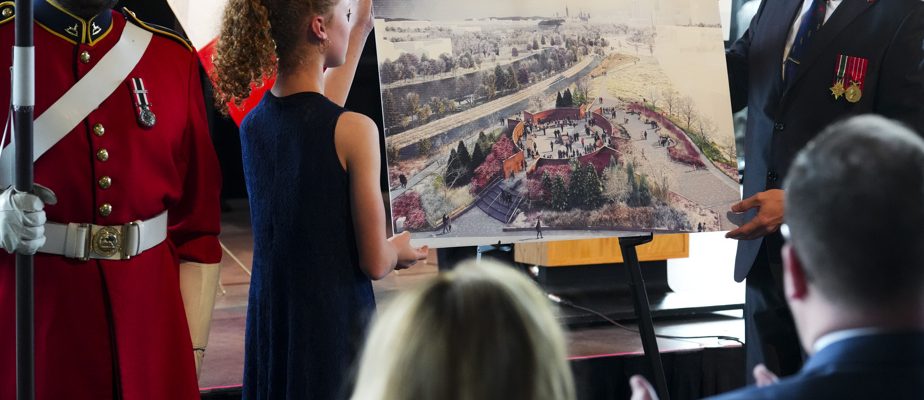(Ottawa) Veterans of the war in Afghanistan were instrumental in choosing the final design for a monument that will commemorate Canada’s contributions to the conflict.
After narrowing it down to five choices, the feds asked a jury to select the winner and asked for the public’s opinion. More than 10,000 people responded to an online survey, and many of them served in Afghanistan or were family members of those who served, Veterans Affairs Minister Lawrence MacAulay said.
They overwhelmingly preferred a design proposed by the team of artist Adrian Stimson: a circular space inspired by an Aboriginal medicine wheel, divided into four parts, with an inner sanctum featuring four bronze bulletproof vests suspended from crosses .
The artist explains that the concept unveiled Monday is inspired by the “medicine wheel”, an important symbol in many indigenous cultures. In the center of this “sanctuary”, there will be four bronze bullet-proof vests, draped over crosses.
Adrian Stimson, a member of the Siksika First Nation in southern Alberta, is himself a veteran of the Canadian Armed Forces. Mr. Stimson joined the Canadian Forces Artist Program as a civilian in 2010 and spent time in Afghanistan observing how the troops lived and interacted with their environment.
“We sought advice from Indigenous elders, made connections with past and present military and families,” he explained.
“While I was there, I became interested in the physical materiality of bases, the industrial nature of integrating troops in the theater of war,” Stimson said Monday at the unveiling of his design at the Canadian War Museum.
“Imitating this, the monument is a place to be discovered and revealed. The monument comes alive as you approach down a winding path, slowly revealing itself, with purpose,” he added.
Three quadrants of the monument will include the names of the 158 Canadian servicemen who were killed in the conflict. The fourth, facing Afghanistan, aims to honor Canada’s relationship with the Afghan people.
The monument is expected to be built in the Lebreton Flats area, across from the War Museum, near the National Holocaust Memorial.
It could take another two or three years to finalize the design and construction, Stimson said, adding to what has already been a years-long process.
The monument was promised by former Conservative Prime Minister Stephen Harper in 2014, and on Monday Tories accused the Liberal government of blocking the project.
Duty of memory
The 13-year mission in Afghanistan involved more than 40,000 members of the Canadian Armed Forces.
Minister MacAulay said Monday that he “cannot imagine” what it was like for the families of those members who waited at home.
” [Le monument] will be a place to capture your memories, a place to reflect, and a gathering place to remember those who never returned,” he said.
International Development Minister Harjit Sajjan, who served as a lieutenant colonel in Afghanistan, said the design captured “the essence of this mission”.
“This is not the future we had hoped for in Afghanistan,” he added, referring to the takeover of the country in 2021 by the Taliban.
“But despite the current conditions in Afghanistan, we must not lose sight of the fact that Canadian and international efforts have helped a generation of Afghans. »
An estimated 47,245 Afghan civilians have been killed in the conflict between 2001 and 2021 along with 66,000 national police and army personnel and more than 51,000 Taliban and opposition fighters.
